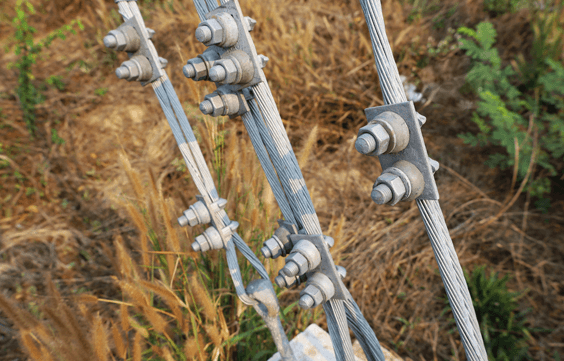
How to Inspect Guy Wire Anchors
Set in concrete below the soil’s surface, guy wire anchors provide stabilization for free standing structures like telecommunications towers. With large portions buried underground, however, these key supports are subject to corrosion. Below is a guide to inspecting guy wire anchors, identifying corrosion severity, and preventing tower failures.
Types of Guy Wire Anchor Inspections
Tower inspectors must examine each anchor point on a given tower, checking for material loss, rusting, and a reduction of galvanization. To spot corrosion and prevent collapse, the competent person on-site conducting the inspection must follow an ordered approach that begins with surface inspections.
Despite the name, surface inspections require personnel to dig at least two feet below the surface and expose the uppermost section of the buried shaft. If a specific level of material loss is found, or a corrosion severity rating of two or higher is assigned, it’s necessary to undergo a dig-to-block inspection.
Excavation inspections, or dig-to-block (DTB), follow surface inspections in which there is a noticeable amount of rust or galvanization is compromised. During these inspections, the competent person establishes a temporary anchor, carefully digs to reveal the remaining buried portion of the shaft, and checks for cross-sectional loss. After further measuring the corrosion severity, engineers decide whether or not to suggest replacements.
Assigning a Corrosion Severity Factor
When examining buried tower anchors, competent persons make evaluations based on a corrosion severity rating, or corrosion severity factor (CSF). Ranging from one to three, the CSF variations include:
- CSF 1 — There is no visible rust or loss of material at the cross section.
- CSF 2 — There is visible rusting, small amounts of flaking metal, or diminished galvanizing. No cross-sectional material loss.
- CSF 3 — There is substantial loss in cross-sectional material or galvanizing.
Those guy wire anchors assigned a rating of CSF 2 or CSF 3 require further inspection and likely must be replaced as soon as possible.
Insure Your Tower Inspections
Knowing that just one corroded anchor could cause tower failure, you must make sure your tower company is properly insured. At USA Telecom Insurance Services, we customize policies specifically for the complex challenges of the telecommunications industry. If you are interested in learning more about our lines of coverage, contact us today to speak with an insurance advisor.
